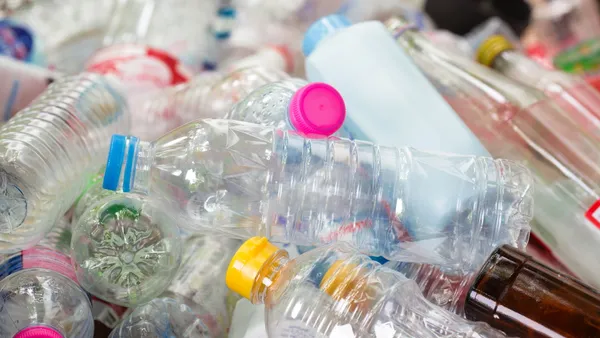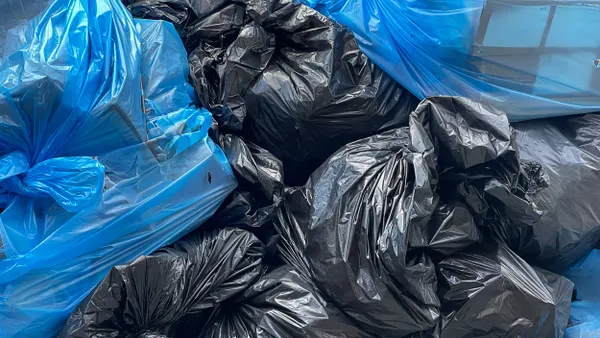Dive Brief:
- New research from Government Advisory Associates (GAA) has found that 65% of material recovery facilities operating in the U.S. are now single-stream, as compared to 27% 10 years ago. This comes from the recently released sixth edition of the firm's Materials Recovery and Processing Yearbook and Directory which looked at 748 operating, planned, shut and canceled projects.
- The survey also found that due to advances in technology the average MRF's throughput is now about 220 tons per day, as compared to 180 tons per day 10 years ago. This tonnage increase has also caused residue rates at single-stream facilities to increase from an average of 12% 10 years to at least 17% now.
- A decline in mixed waste processing facilities over the same period from 36 to 29 was also noted, though GAA suggests the technology may be making a comeback. Out of 20 planned recycling facilities that will be opening in the next few years, half of them will be handling mixed waste.
Dive Insight:
By directly contacting each facility for information on processing figures, contract terms, capital costs and other factors, GAA has created a comprehensive database of the country's MRF system. GAA says that due to decreased revenues and lower commodity prices, companies are working to consolidate their operations and are more interested in risk-sharing provisions. This analysis lines up with recent comments from the leadership of Waste Management, Republic Services and other smaller companies.
These factors have also contributed to a decline in glass processing, which the survey notes. In Florida, one city has decided not to bother with glass even though a new MRF built-in special processing capabilities for it. Western companies such as Momentum Recycling have found ways to make the material profitable and one new Utah facility has factored unsorted glass into its business model. This system of varying regional approaches can be expected to continue as long as economic conditions remain tough for MRFs.
Looking into the future, some say that mixed waste processing is the only way to significantly increase capture rates, though others are still hesitant because of concerns about contamination and residue rates. Issues at a facility in Montgomery, AL haven't helped the concept's image either. The inclusion of this sorting technology in project such as Fiberight's new waste-to-energy facility in Maine could set a new precedent and further change the model for material recovery facilities.











